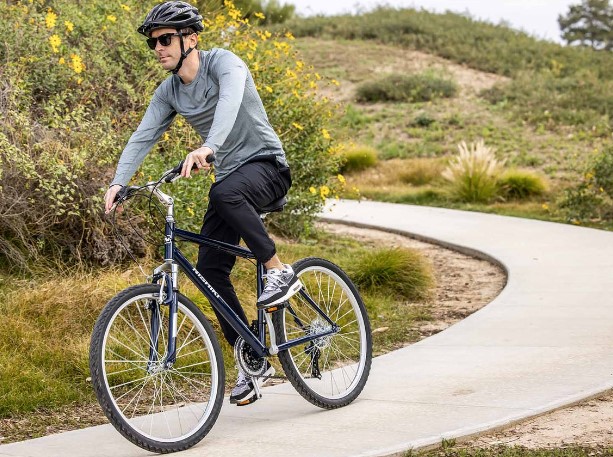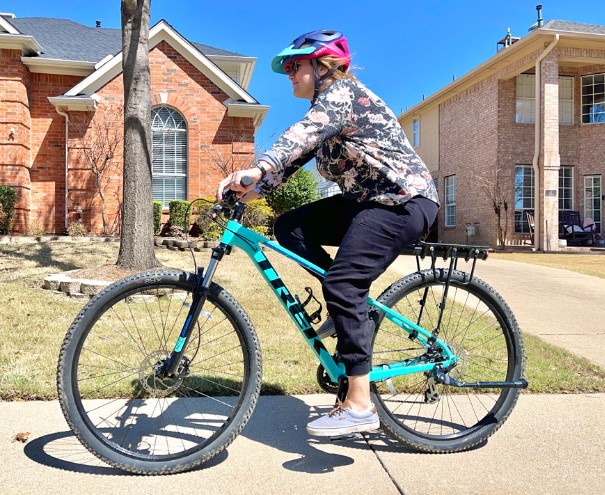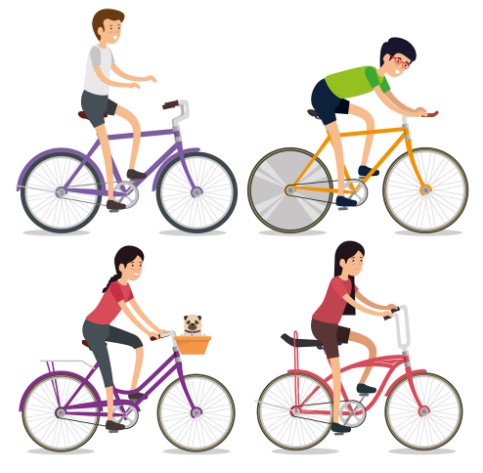In the dynamic landscape of cycling, the distinction between men’s and women’s bikes remains a focal point of discussion. This post aims to dissect this intriguing topic by examining the anatomical differences, frame geometry, and the intended usage of bikes tailored for men and women. Whether you’re a seasoned cyclist or a beginner, understanding these nuances can really improve your biking experience.
Understanding the Physiological Divide
The intricacies of bicycle design are deeply influenced by the physiological differences between men and women, reflecting a super important aspect of ergonomics and efficiency in cycling. Men typically have taller statures, longer torsos, and extended arms. This necessitates a specific handlebar reach and frame length in bicycles to accommodate their build. Without this customization, men may experience discomfort, inefficient cycling, and even potential injury.
In contrast, women generally exhibit shorter torsos and narrower hips. This demands a distinct approach in designing bike saddles and handlebar positioning. Such tailored designs are super important for making sure comfort, optimal control, and preventing strain during cycling.
These anatomical variations go beyond mere physical traits. They significantly influence a cyclist’s posture, comfort, and overall performance. A bike that does not align with the rider’s physique can impair riding comfort and reduce endurance, affecting the cycling experience.
Acknowledging these gender-specific physiological needs is paramount in bicycle selection. Opting for a bike that aligns with one’s anatomy can revolutionize the cycling experience. It leads to more efficient, comfortable, and rewarding rides, enhancing both the enjoyment and performance aspects of cycling. Thus, understanding and addressing the physiological divide in bicycle design is not just about comfort but also about maximizing the potential of each cyclist.
Tailoring the Ride to the Rider
The concept of frame geometry is integral to bike design, influencing everything from comfort to riding efficiency.
Men’s bikes generally feature a larger frame size with a higher standover height, complementing their longer arms and torsos. This results in a stretched-out riding position, beneficial for power transfer and comfort, especially over long distances.

In contrast, women’s bikes often exhibit a smaller frame size with a lower standover height. This design accommodates shorter torsos and narrower hips, facilitating a more upright riding position. This distinction in frame geometry is not just a marketing gimmick; it’s a response to the real ergonomic needs of different body types.
Gearing Up for Specific Riding Styles
The intended use of a bike greatly influences its design and features.
Men’s bikes are often tailored for performance-oriented activities like road racing and mountain biking. These bikes emphasize lighter frames, stiffer components, and aggressive geometry, focusing on speed and efficiency.
Women’s bikes, on the other hand, might be designed with comfort and versatility in mind. Ideal for casual rides, commuting, or recreational cycling, these bikes often include features like wider saddles, swept-back handlebars, and relaxed geometry to support a comfortable upright position. This distinction in intended usage underlines the fact that men’s and women’s bikes are designed with specific riding experiences in mind.

Embracing Diversity and Choice
While some might dismiss the differences between men’s and women’s bikes as mere marketing tactics, it’s super important to acknowledge the genuine anatomical and usage-based considerations that drive these designs. However, the rise of unisex bikes has blurred these distinctions, offering designs that cater to a broader range of body types and preferences. This trend towards inclusivity and diversity in bike design is a positive step, reflecting the evolving landscape of cycling.

Ultimately, the choice between a men’s, women’s, or unisex bike should be based on individual preference, riding style, and comfort. The goal is to find a bike that best suits your needs and allows you to relish the joy and freedom of cycling.
Meeting Diverse Needs
Over the years, bike design has evolved significantly, with manufacturers constantly innovating to meet the diverse needs of cyclists. This evolution reflects an understanding that there is no one-size-fits-all when it comes to bikes. For example, advances in materials and technology have allowed for lighter, stronger frames that can be tailored to different body types and cycling preferences. Additionally, the incorporation of adjustable components like handlebars and seats means that bikes can be customized to fit individual riders more precisely, regardless of whether they are categorized as men’s or women’s bikes. This focus on customization and adaptability highlights the industry’s commitment to providing every cyclist with the best possible riding experience.
Choosing the Right Bike
When selecting a bike, it’s super important to consider factors beyond gender. These include your cycling goals (recreation, fitness, competition), the type of terrain you’ll be riding on (road, trail, mixed), and your physical attributes and preferences. For instance, a taller woman might find a men’s bike more comfortable, or a man with shorter legs might prefer the geometry of a woman’s bike. It’s also super important to test ride different models to see which feels best. The key is to focus on the fit and feel of the bike, rather than its gender designation.
Customization and Personalization
Customization is a significant trend in cycling, allowing riders to tailor their bikes to their specific needs and tastes. This can range from simple adjustments like changing the saddle or handlebars to more extensive modifications like altering the frame geometry. Personalization also extends to aesthetic choices, allowing riders to express their style through color, design, and accessories. By customizing your bike, you not only ensure a better fit and more comfortable ride but also create a bicycle that reflects your personality and lifestyle.
Conclusion
In conclusion, the choice between a men’s or women’s bike should be based on personal comfort, riding style, and individual needs rather than adhering strictly to gender norms. The cycling world is rich with options, from gender-specific designs to versatile unisex models, each offering unique benefits. We encourage you to explore these options, prioritize what feels right for you, and embrace the journey of finding your perfect bike. Remember, the best bike is the one that fits you well and brings joy to your rides. For more insights and resources on cycling, be sure to visit Best Bike Parks, where you can find a wealth of information to enhance your cycling experience.







